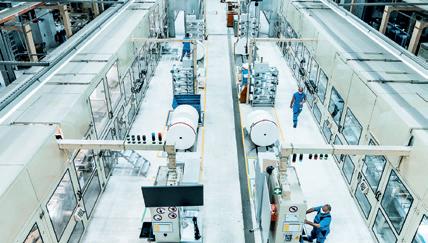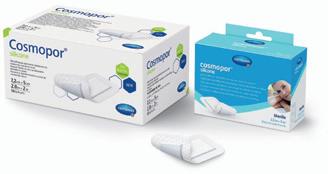
4 minute read
3.1 Our approach
product portfolio
Professional system offers for Wound Care, Incontinence Management and Infection Management form the core of the portfolio. This is supplemented by consumer-oriented medical assortments, medical care and cosmetic products, as well as other products relating to health and well-being.
Advertisement
In the Wound Care segment, HARTMANN focuses on wound healing solutions and dressing materials. The broad spectrum of traditional and modern wound dressings includes a new range of silicone-coated, skin-friendly wound dressings, the established treatment concept HydroTherapy with the two products HydroClean® and HydroTac®, and the superabsorbent compresses of the Zetuvit® Plus product family.
In the Incontinence Management segment, the focus is on absorbent products worn next to the skin for varying degrees of incontinence. These include the product categories MoliCare® Premium Mobile, and MoliCare® Premium Elastic. Products for patient hygiene and skin care specially tailored to incontinence are also part of the assortment. The Infection Management segment comprises the Risk Prevention and Disinfection divisions. In addition to customer-specific sterile component sets and examination gloves, Risk Prevention requires a broad product portfolio for surgical operation requirements. The latter includes, but is not limited to, sterilized peha® instruments, Foliodress® apparel and coverings, and Foliodrape® products used as disposable covers in hospital wards and surgical environments.
In the Disinfection division, HARTMANN develops and produces products for hand and surface disinfection to protect against infectious diseases: These include the disinfectant Sterillium®, which has received the Brand of the Century award several times in Germany. Sterillium® Protect & Care is available for end-users. Particularly during the corona pandemic, the systemically relevant importance of this product and solution portfolio in the Infection Management segment became especially clear.
The Group companies Kneipp, KOB and CMC are assigned to the Complementary Group Divisions segment. Products marketed by Kneipp include care products, food supplements, and herbal medicines, under the brand claim “Joyful by nature”. KOB specializes in medical textiles and sanitary pads. CMC mainly focuses on retail brands in the Cotton/Cosmetic, Medical, Baby, and Home Consumer Medical Care sectors.
1 “Pflichttext” for Sterillium® according to the
German „Heilmittelwerbegesetz“ (HWG), see page 43.

Market and regulatory requirements
The HARTMANN Group product portfolio is generally subject to highly complex regulatory requirements. Both the general and regulatory requirements are constantly increasing. One example is the new provisions of the European Medical Device Regulation (MDR).
Global standards and regulatory management
Through the e-NORM software, HARTMANN makes information available worldwide on the relevant standards and regulations to which all Group companies are subject. In addition, this software reliably keeps regulatory requirements for medical devices fully up to date, as well as further relevant product categories, product and process development activities. Furthermore, the system makes it easy for users to participate in managing standards and regulations. The software solution is in use at 17 locations in Germany, the Czech Republic, France, Italy, Switzerland, Spain, and the USA.

The production facility in Herbrechtingen manufactures incontinence products.

Research and development work
Through continual research and development work, HARTMANN ensures it provides products and services that meet the highest requirements in terms of functionality, practical usability, value for money, and safety. To this end, the Company closely involves its global subsidiaries in the product development process. Examples include Group-wide Product Lifecycle Management (PLM) and Change Control Management. In the year under review, the Company invested EUR 94.9 million (2020: EUR 89.3 million) in research and development.
product innovation
Product development at HARTMANN incorporates user experience and expectations, functional analyses and medical findings, as well as the latest findings from materials science and technological research, experience from our own production, current market data, key aspects of ergonomics and the latest advances in functional design.
Great attention is also paid to sustainability aspects. Through targeted material selection and functional product design, HARTMANN maximizes the value added by its products and at the same time minimizes any possible negative environmental impacts. For example, this is achieved by reducing the specific quantity of materials employed, reducing or even completely eliminating production waste – e. g. in case of textile scraps – and selecting more environmentally friendly materials. The Company also continually optimizes the sustainability of its products through well thought-out product concepts that allow customers to use fewer products or lower product quantities to achieve the same performance and function.
In packaging development, simplification, eliminating certain packaging stages, and the consistent use of recycled and recyclable materials all offer major sustainability optimization potential. HARTMANN has systematically organized its product development work, and processes and supports this with systems such as Product Lifecycle Management (PLM).

Cosmopor® Silicone, the first sterile post-operative wound dressing with silicone technology.










